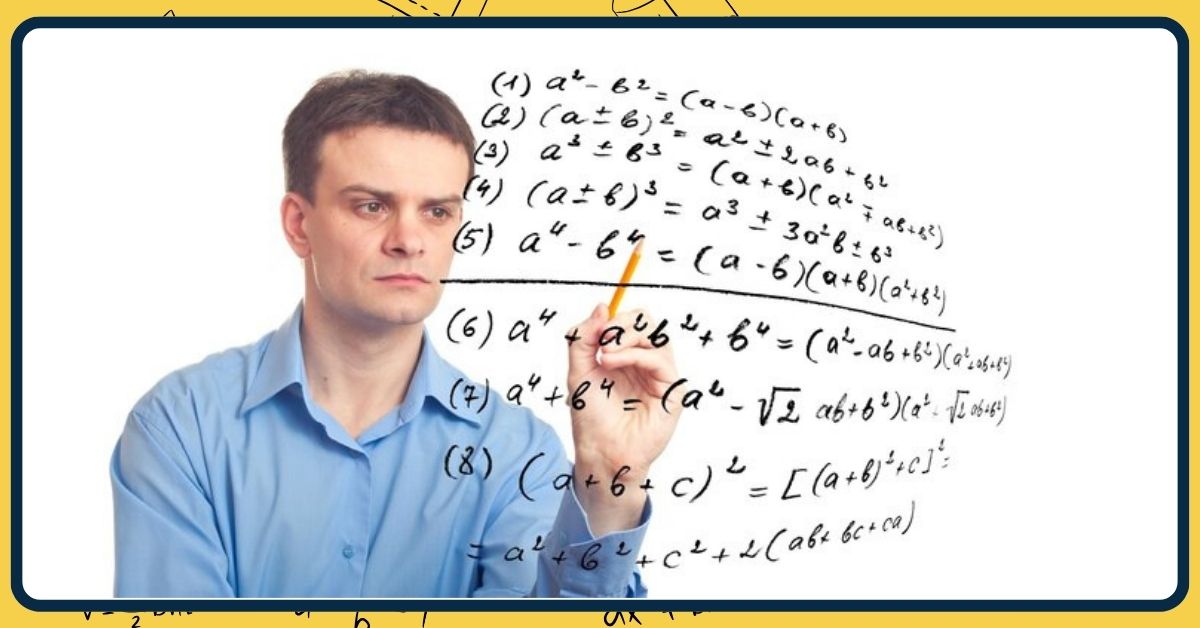Welcome to our comprehensive guide to discrete mathematics! In this article, we explore 50 Examples of Discrete Math that showcase the diverse applications and significance of math across various fields. From computer science to cryptography, discrete mathematics serves as the backbone of modern technology and problem-solving methodologies.
Understanding Discrete Mathematics
Discrete mathematics is a branch of mathematics that deals with countable, distinct, and separate objects rather than continuous ones. It involves the study of mathematical structures that are fundamentally discrete rather than continuous, focusing on objects that can be counted or enumerated in whole numbers. This field encompasses various topics, including set theory, graph theory, combinatorics, number theory, logic, and more.
In discrete mathematics, the objects of study are typically finite or countably infinite, meaning they can be listed or enumerated using natural numbers. This contrasts with continuous mathematics, which deals with objects that can take on any value within a given range, such as real numbers or functions of real variables.
Discrete mathematics plays a crucial role in computer science, cryptography, information theory, operations research, and other areas where precise, logical reasoning and problem-solving are essential. It provides the theoretical foundation for algorithms, data structures, and computational methods used in diverse fields, making it a fundamental and indispensable part of modern mathematics and its applications.
Examples of Discrete Math
Examples of Discrete Math are given below:

- Boolean Algebra: Fundamental to digital logic and computer science, Boolean algebra deals with binary variables and logical operations like AND, OR, and NOT.
- Graph Theory: Explore the concept of graphs, which consist of vertices (nodes) and edges (connections), and their applications in network analysis and optimization.
- Combinatorics: Delve into combinatorial mathematics, which deals with counting, arranging, and choosing objects, crucial in various fields like probability and cryptography.
- Number Theory: Unravel the mysteries of prime numbers, divisibility, and modular arithmetic, with applications in cryptography and computer science.
- Game Theory: Examine strategic decision-making in competitive scenarios, pivotal in economics, political science, and evolutionary biology.
- Cryptography: Discover how discrete mathematics forms the foundation of secure communication systems through encryption algorithms like RSA and AES.
- Coding Theory: Explore error-detecting and error-correcting codes, essential in data transmission and storage.
- Finite State Machines: Investigate abstract machines with a finite number of states, used in modeling real-world systems and designing algorithms.
- Graph Coloring: Learn about assigning colors to vertices of a graph, with applications in scheduling, map coloring, and register allocation.
- Pigeonhole Principle: Understand the concept that if n items are placed into m containers and n > m, then at least one container must contain more than one item, vital in counting arguments.
- Recurrence Relations: Examine sequences defined recursively, prevalent in algorithm analysis and generating functions.
- Logic Gates: Delve into the building blocks of digital circuits, facilitating logical operations and data processing.
- Hamiltonian Paths and Cycles: Explore paths that visit each vertex exactly once, significant in graph theory and optimization problems.
- Modular Arithmetic: Learn about arithmetic operations performed on remainders, pivotal in cryptography and number theory.
- Binomial Coefficients: Understand combinations and Pascal’s triangle, essential in probability theory and combinatorial analysis.
- Order Theory: Explore the study of partially ordered sets and their properties, fundamental in mathematics and computer science.
- Set Theory: Dive into the foundation of mathematics, examining sets, relations, functions, and cardinality.
- Probability Theory: Investigate the mathematical study of randomness and uncertainty, crucial in decision-making and statistics.
- Game Trees: Analyze decision trees representing possible moves in a game, used in artificial intelligence and strategic planning.
- Discrete Probability Distributions: Explore discrete random variables and their probability distributions, applicable in modeling real-world phenomena.
- Graph Algorithms: Study algorithms for solving problems on graphs, such as shortest path and minimum spanning tree algorithms.
- Hash Functions: Understand functions that map data of arbitrary size to fixed-size values, integral in data retrieval and security.
- Counting Principles: Learn fundamental counting principles like multiplication, addition, and inclusion-exclusion, essential in combinatorial analysis.
- Matrix Operations: Explore operations on matrices, vital in computer graphics, optimization, and solving systems of linear equations.
- Cryptographic Protocols: Examine protocols for secure communication, ensuring confidentiality, integrity, and authentication.
- Combinatorial Optimization: Investigate optimization problems involving discrete variables, significant in operations research and logistics.
- Discrete Fourier Transform: Understand the transformation of discrete data into frequency domain representations, crucial in signal processing.
- Tree Traversal: Study methods for visiting each node in a tree structure, used in algorithms for data retrieval and manipulation.
- Generating Functions: Explore formal power series used to represent sequences, facilitating combinatorial analysis and solving recurrence relations.
- Number Systems: Delve into different number systems like binary, octal, and hexadecimal, essential in computer science and digital electronics.
- Decision Trees: Analyze tree-like structures representing decisions and their consequences, used in machine learning and decision analysis.
- Discrete Event Simulation: Investigate simulations of systems where events occur at discrete points in time, crucial in modeling complex systems.
- Combinatorial Geometry: Explore geometric concepts through combinatorial methods, significant in computational geometry and optimization.
- Markov Chains: Understand stochastic processes with a finite number of states and probabilistic state transitions, used in modeling diverse phenomena.
- Eulerian and Hamiltonian Graphs: Examine graphs with specific properties regarding paths and cycles, crucial in graph theory and network analysis.
- Discrete Cosine Transform: Study the transformation of discrete data into frequency domain representations, used in image compression and processing.
- Decision Tables: Analyze tabular representations of decision-making processes, used in decision support systems and business analysis.
- Discrete Mathematics in Computer Science: Explore the interdisciplinary nature of discrete mathematics in computer science, influencing algorithm design, data structures, and cryptography.
- Discrete Mathematics in Engineering: Understand the application of discrete mathematics in engineering disciplines like electrical engineering, telecommunications, and operations research.
- Discrete Mathematics in Cryptography: Investigate the crucial role of discrete mathematics in developing secure cryptographic systems, safeguarding sensitive information in digital communication.
- Discrete Mathematics in Finance: Explore the use of discrete mathematics in financial modeling, risk analysis, and algorithmic trading strategies, shaping the modern landscape of finance.
- Discrete Mathematics in Biology: Examine how discrete mathematics contributes to modeling biological systems, analyzing genetic sequences, and understanding population dynamics.
- Discrete Mathematics in Linguistics: Understand the application of discrete mathematics in natural language processing, text analysis, and computational linguistics, enabling advances in machine translation and information retrieval.
- Discrete Mathematics in Education: Explore the role of discrete mathematics in curriculum development, pedagogical strategies, and educational technology, fostering critical thinking and problem-solving skills in students.
- Discrete Mathematics in Social Sciences: Investigate the utilization of discrete mathematics in social network analysis, behavioral modeling, and decision-making theories, providing insights into human interactions and societal trends.
- Discrete Mathematics in Operations Research: Examine how discrete mathematics informs optimization techniques, supply chain management, and logistics planning, enhancing efficiency and productivity in diverse industries.
- Discrete Mathematics in Artificial Intelligence: Understand the fundamental principles of discrete mathematics underlying algorithms for machine learning, pattern recognition, and intelligent systems, driving innovations in artificial intelligence.
- Discrete Mathematics in Robotics: Explore the application of discrete mathematics in robot motion planning, sensor networks, and autonomous navigation, advancing the capabilities of robotic systems in various domains.
- Discrete Mathematics in Quantum Computing: Investigate the foundational concepts of discrete mathematics in quantum algorithms, quantum error correction, and quantum cryptography, shaping the future of computing paradigms.
- Discrete Mathematics in Everyday Life: Reflect on the pervasive influence of discrete mathematics in everyday life, from digital technologies and internet security to scheduling appointments and organizing tasks efficiently.
In conclusion, discrete mathematics serves as a cornerstone of modern mathematics and its applications span across diverse disciplines, from computer science and cryptography to finance and biology. By exploring the 50 captivating examples highlighted in this article, we gain a deeper appreciation for the power and versatility of discrete mathematics in solving real-world problems and driving innovation across various domains.
{stop article}

